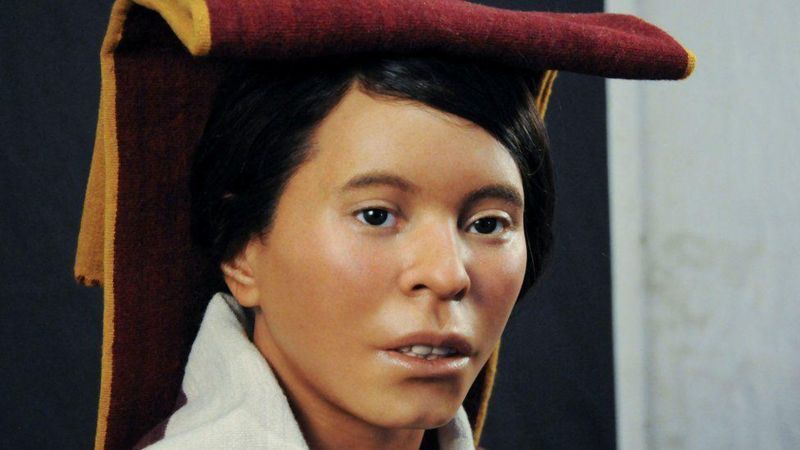Scientists reconstruct the face of a 500-year-old Inca mummy
To get the model to look as accurate as possible, they used body scans, skull measurements, DNA studies and ethnological characteristics as a guide.

A few minutes every morning is all you need.
Stay up to date on the world's Headlines and Human Stories. It's fun, it's factual, it's fluff-free.
The backstory: The Inca civilization was a culturally rich, intelligent empire spanning parts of western South America. It was most prominent from around 1200 to 1533 AD when Spanish colonizers arrived in Peru. The empire really flourished from the mid-15th century until colonization.
The Inca people are known for their architecture, like the world-famous fortress of Machu Picchu in modern-day Peru. The Incas are also known for their human sacrifice rituals, or, specifically, how they would sacrifice carefully chosen children and young teens. They would complete capacocha, the ceremony of human sacrifice, to please their gods before, during or immediately after a disturbing event – like a natural disaster or the death of an emperor. The child would bring great honor to their family – they were thought to be connected to the gods. These children were brought to a high mountain summit, where they were drugged before dying and being buried. Because the sacrifices and burials happened so high on the mountains, archaeologists have found many of these bodies effectively mummified by the cold and ice.
More recently: Peru was the center of the Incan empire, and the mountains around the city of Cuzco hosted a lot of these sacrifices. One of the most famous Incan ice mummies was found in 1995 by American archaeologist Johan Reinhard and Peruvian mountaineer Miguel Zárate. Discovered at an altitude of more than 6,000 meters on the Ampato volcano, this mummy was a 14 or 15-year-old Incan girl who died about 500 years ago. She’s known as the “Lady of Ampato,” “Inca Ice Maiden” or “Juanita.”
When Juanita was discovered, she was still wearing a ceremonial tunic and headpiece, and her body was surrounded by ceramic objects like bowls and figurines. Juanita is so well-known and famous in Peru because she’s the first female mummy discovered in the Andes mountains, and her mummy is especially well-preserved for a 500-year-old body. Her internal organs, hair, blood, skin and the contents of her stomach were preserved. But her face wasn’t.
The developments: Archaeologists just revealed a reconstruction of Juanita’s face, showing what she probably would’ve looked like when she was alive. The reconstruction is a model made of silicone, showing a young girl with almost-black eyes and dark eyebrows. A team of Peruvian and Polish scientists worked to reconstruct Juanita’s bust with Oscar Nilsson, a Swedish facial reconstruction specialist.
To get the model to look as accurate as possible, they used body scans, skull measurements, DNA studies and ethnological characteristics as a guide. Nilsson says that the process took about 400 hours of work to model Juanita’s face. The reconstruction is now on display at the Catholic University of Santa Maria in Arequipa, Peru, wearing clothes similar to those found on the mummy.
Key comments:
“I thought I'd never know what her face looked like when she was alive,” Dr Johan Reinhard said. “Now 28 years later, this has become a reality thanks to Oscar Nilsson's reconstruction."
The first step in recreating Juanita’s face was “to obtain a replica of the skull,” said Dagmara Socha, a Polish bioarchaeologist at the University of Warsaw’s Center for Andean Studies.




Comments ()